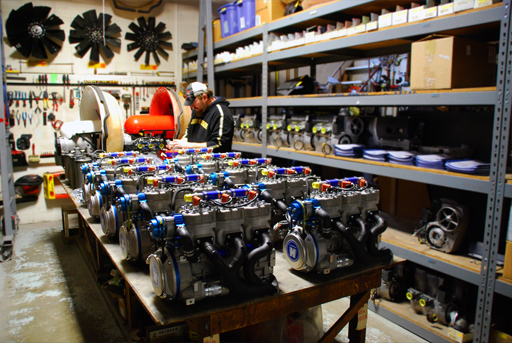About Hovercraft
To understand how hovercraft work, it is necessary to realize that the dynamics are more closely related to aircraft than to boats or automobiles.
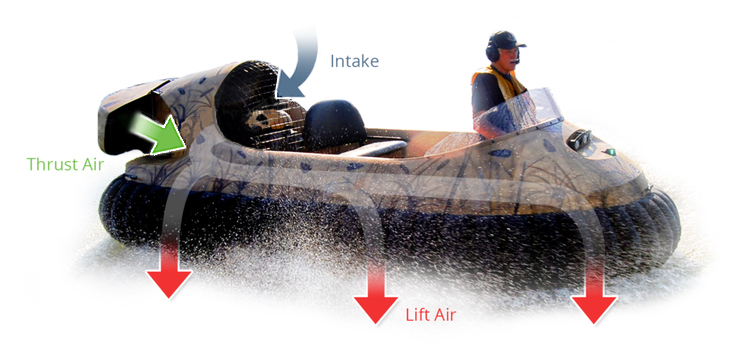
Although often seen as a mysterious, even bizarre mode of transportation, it is conceptually quite simple. A hovercraft is an amphibious vehicle that is supported by a cushion of slightly pressurized air.
As a member of the family of air cushion vehicles (ACVs) or ground effect machines, which includes wing-in-ground-effect or ram wings, surface effect ships, sidewall air cushion vehicle, and surface skimmers, hovercraft, are the amphibious member of the air cushion vehicle family. They are the most novel among vehicles that are supported by pressurized air.
How Hovercraft Work
To understand how hovercraft work, it is necessary to realize that the dynamics are more closely related to aircraft than to boats or automobiles.
Hovercraft utilize one or more fans or propellers to create lift and thrust. Lift air is captured in a flexible fabric skirt, causing the craft to hover above the surface. Thrust air is directed backward, moving the craft forward. The Neoteric Hovertrek™ is one of the only hovercraft to employ a single engine for both lift and thrust, making it lighter, more maneuverable and easier to maintain.

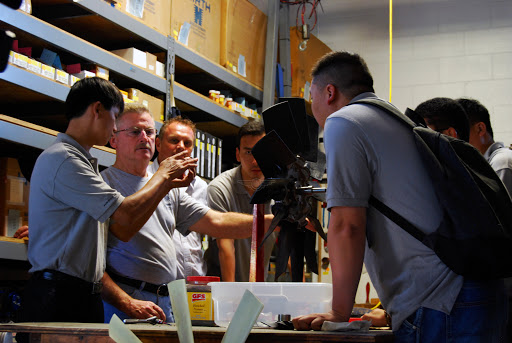
NEOTERIC - THE GLOBAL STANDARD FOR HOVERCRAFT TECHNOLOGY AND DESIGN
Often imitated, but never surpassed, each Neoteric hovercraft is a fusion of advanced technologies and skilled, hands-on workmanship, always adhering to the highest quality standards in materials, components and procedures. As the most experienced in the industry, Neoteric’s engineers, designers and craftspeople deliver time-tested hovercraft that promise the confidence and pride of owning a uniquely agile, safe, durable and distinctive multi-purpose vehicle; one that has been engineered to be easily maintained.
Like all flying machines, hovercraft require a high power, low weight engine, but must also have an exceptionally durable engine to survive travel on every type of terrain.
Before any engine is deemed capable of powering the Hovertrek hovercraft, Neoteric demands that it first survive more than 50 hours of rigorous testing in unrelenting scenarios without failure of any kind. Few engines are up to this challenge. The engines that have proven themselves are the Hirth 2703 (55 hp), 3203 (65 hp) and 3701 (100 hp). These robust, 2-cycle aircraft engines have a higher power-to-weight ratio than any other light aircraft engine.
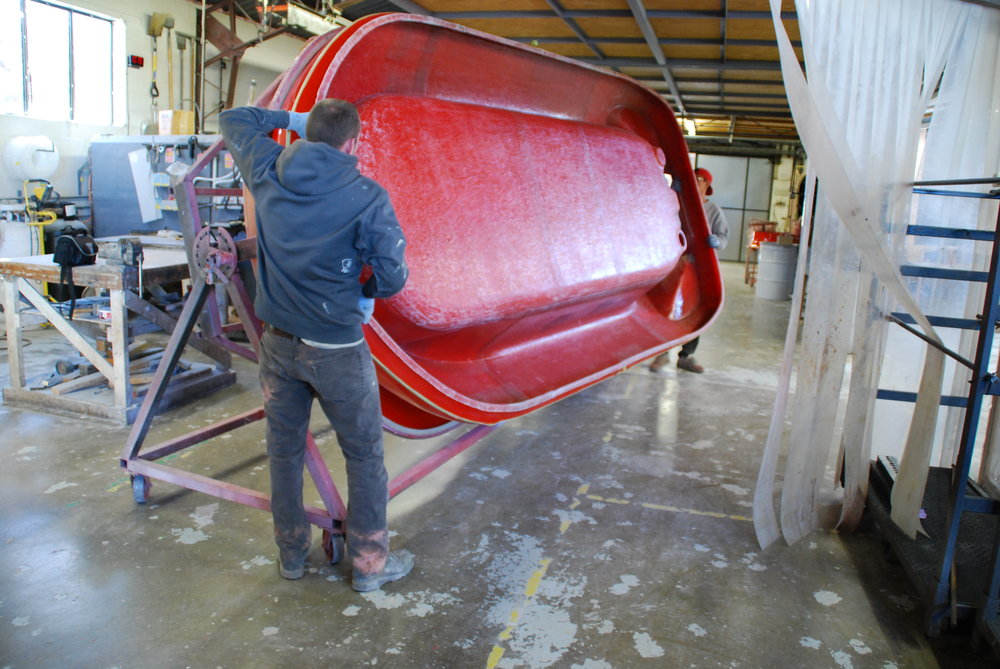
LIGHTWEIGHT YET DURABLE STRUCTURES
A lighter hovercraft moves more easily, requires minimal cruising power, is easier to handle, and allows more payload capacity. The Neoteric Hovertrek™ is the lightest hovercraft on the market.
To achieve its exceptionally light weight, each Neoteric hovercraft is individually constructed of hand-laid fiberglass composite urethane and PVC foam core rather than thermoplastic. This not only results in a rigid and durable craft that is easily repaired, it allows all Neoteric hovercraft to be easily lifted and carried.

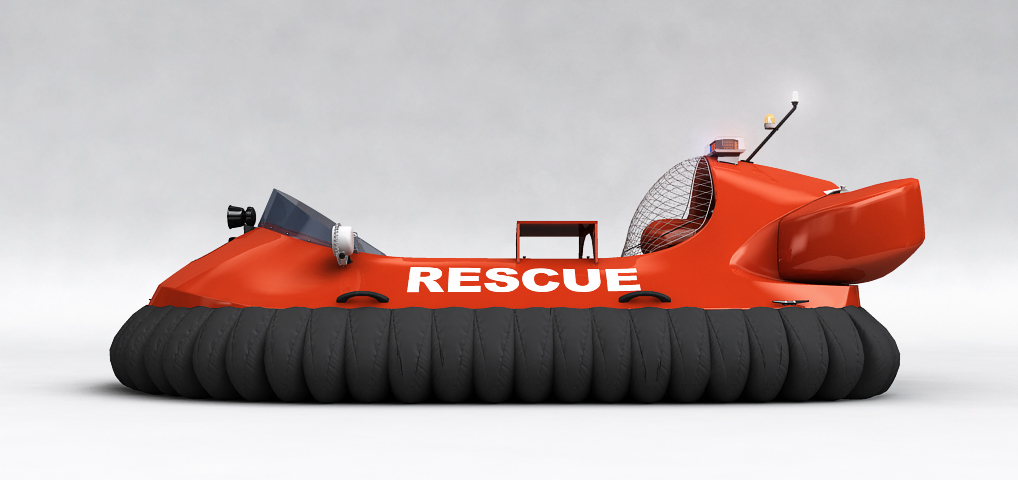
DISTINCTIVE AERODYNAMIC DESIGN
The design of a Neoteric hovercraft gives you far more than a sleek appearance: Neoteric’s engineers have achieved a masterful fusion of aesthetics and performance. Designed to fly, Neoteric hovercraft glide effortlessly through the air over land or water while, internally, lift air flows from the fan to skirt segments with ease.
With the lowest profile and center of mass of any hovercraft on the market, the Hovertrek hovercraft's design also makes it virtually impossible to capsize, lets it easily clear overhanging obstructions, and gives it uncompromising performance through minimized air drag and crosswind impairment.

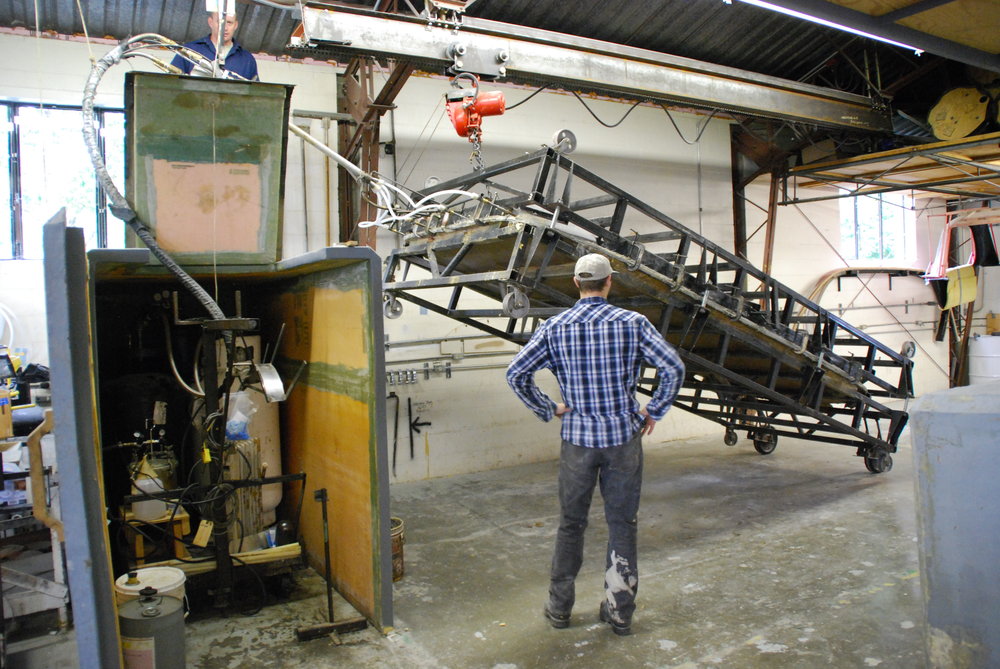
CUTTING EDGE HULL TECHNOLOGY
A Neoteric hovercraft will never sink. The hull is injected with closed cell urethane foam that meets United States Coast Guard standards. This gives our hovercraft more than 100% positive buoyancy, which prevents sinking, even if the hovercraft were somehow broken in half. This buoyancy also gives Neoteric hovercraft incomparable hovering and floating stability, enabling you and your passengers to move about on a level surface without danger of the craft tipping.
The Neoteric hovercraft hull is also specially engineered with sophisticated technology that greatly minimizes the chance of a plow-in, which can eject passengers. Rather than plow in, a Neoteric hovercraft hull will merely kiss the water and safely bounce back up.
Finally, the safety offered by the Neoteric hovercraft hull is matched by its durability. Two high strength skids are positioned on the hull’s bottom to serve as a barrier between the hull and the potentially damaging surfaces below.
REVOLUTIONARY REVERSE THRUST SYSTEM
The Neoteric reverse thrust system not only makes the Hovertrek™ the only hovercraft in the world with effective brakes, it also allows it to outmaneuver every other hovercraft on the market. Reverse thrust provides all Neoteric hovercraft with superb maneuverability, not only for braking, but also for hovering backwards, yawing, spinning and maintaining lift cushion downwind at speed – and reverse thrust is absolutely essential for hovering over ice and on swift water.
Neoteric’s reverse thrust system surpasses jet aircraft in efficiency: while such aircraft deliver only 18% thrust in reverse, our hovercraft deliver 60%. Neoteric hovercraft are so efficient that they can achieve a speed of greater than 25 mph (40 km/h) in reverse and are the only hovercraft in the world that can accelerate over hump in reverse.
With a digital microprocessor developed exclusively for Neoteric, our hovercraft use a fly-by-wire reverse thrust system. This allows you to move either of the reverse thrust buckets to any position desired, with ease. This unique microprocessor also incorporates an advanced diagnostic system that helps you calibrate, troubleshoot and debug the system with ease.
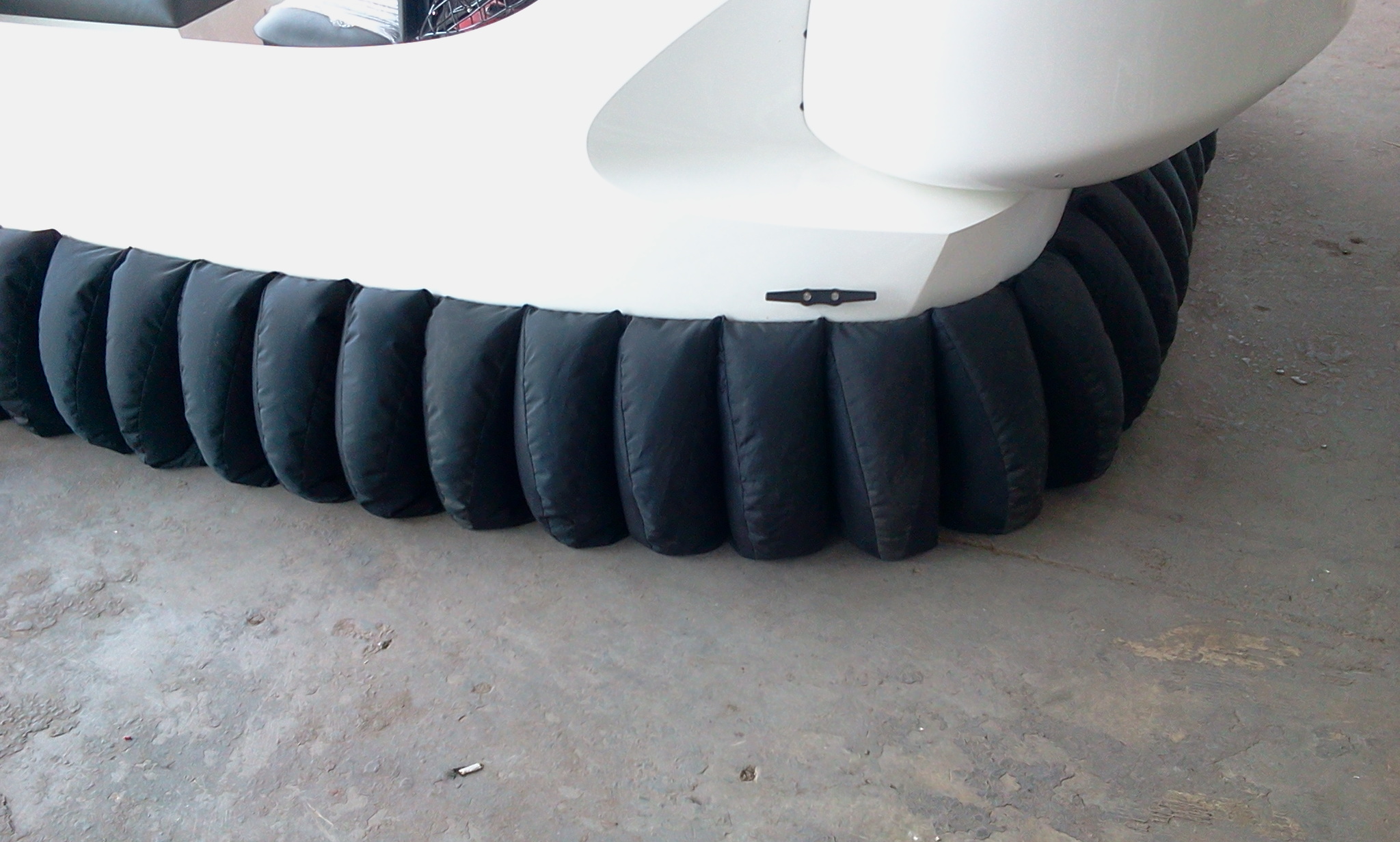
QUICK-CHANGE, ANTI-PLOW SKIRTS
Neoteric hovercraft skirts feature an inventive quick-change system that allows you to replace skirt segments in the field without the need for any tools whatsoever. New segments slide into a special slot along the hovercraft’s edge without the need for mechanical fasteners, which enhances the sleek, agile appearance of all Neoteric hovercraft.
We also incorporate advanced anti-plow technology in 20 skirt segments at the bow of Neoteric hovercraft, as well as anti-scoop technology in 10 segments at the stern. A diaphragm in the front segments prevents them from collapsing and tucking under in the event of a plow-in; the segments stay expanded, delivering vital lift air to the front of the craft, which considerably lessens the consequences of a plow-in. An anti-scoop flap in the rear segments prevents them from filling with water while getting over hump. This reduces the power required, saving you valuable time and fuel.
High Speed Filming of Skirt Flagellation
Samples of various skirt fabric are tested to destruction. Material area of damage is compared for given test time, usually 3 hours. The sample with the least amount of damage is superior.
A high speed camera recording at 1260 frames a second is used together with TEMA Motion Analysis Software to calculate frequency of flapping and fabric accelerations. This test rig is useful as a rapid means of determining fabric suitability for use as hovercraft skirts.
UNCHALLENGED FAN TECHNOLOGY
The hovercraft fan technology originated by Neoteric is unrivalled in the hovercraft industry. Its small diameter/high efficiency fan makes the Neoteric Hovertrek™ the quietest hovercraft available, it also gives it precision performance capabilities.
A slow fan tip speed coupled with minimal clearance between the fan and intake ducting is responsible for the low noise level of Neoteric hovercraft.
Neoteric hovercraft also have a smaller fan than any other hovercraft on the market. Having the thrust near the traveling surface creates stability. This means that, unlike other hovercraft, Neoteric hovercraft stay level (trimmed) through changes in side wind and thrust. It also improves banking in turns and makes our hovercraft much more stable – and more aesthetically appealing in design - than hovercraft with larger fans.
WIND TUNNEL TESTING
The Hovertrek™ is a thoroughly tested light hovercraft. During 2011 Neoteric amplified it's testing program to include wind tunnel testing in Austrailia at the Royal Melbourne Institute of Technology (RMIT), School of Aerospace. The RMIT Wind Tunnel was used to advance the development of the Neoteric high speed hovercraft. It's paving the way for a technological leap forward.Futuristic limited edition Neoteric Hovercraft model: 6153 will be used in an attempt to break the world light hovercraft speed record, and to capture global headlines.
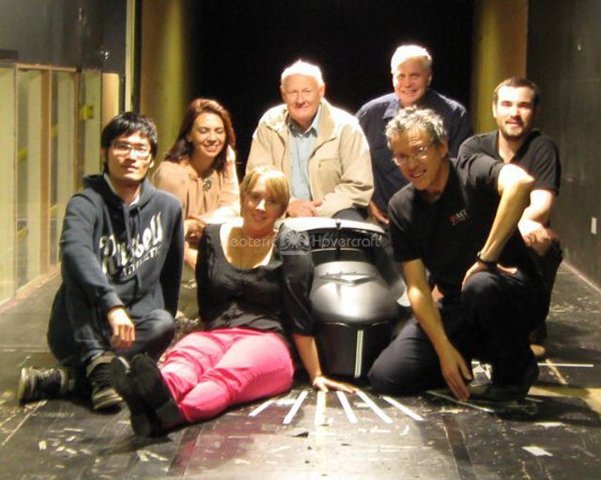
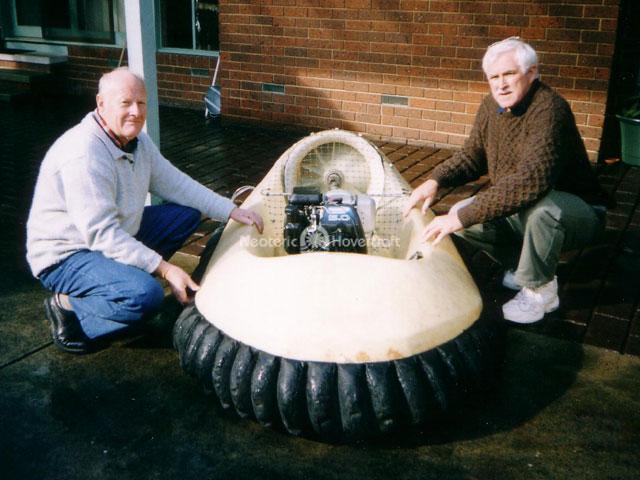
HALF-SCALE TEST MODEL HOVERCRAFT
Aerodynamic lift duct design and engineering is tested on a half-scale model of a Neoteric hovercraft.
ADVANCED PERFORMANCE TESTING
Neoteric hovercraft are the most thoroughly tested and monitored light hovercraft on the market. This ongoing meticulous evaluation allows Neoteric to define the performance envelope of all Neoteric hovercraft with such precision that our customers are able to confidently push their hovercraft to the absolute edge, without compromising safety. This high-tech evaluation is conducted at both Neoteric locations: Neoteric Hovercraft, Inc. in the United States and Neoteric Engineering Affiliates, Pty. Ltd. in Australia.
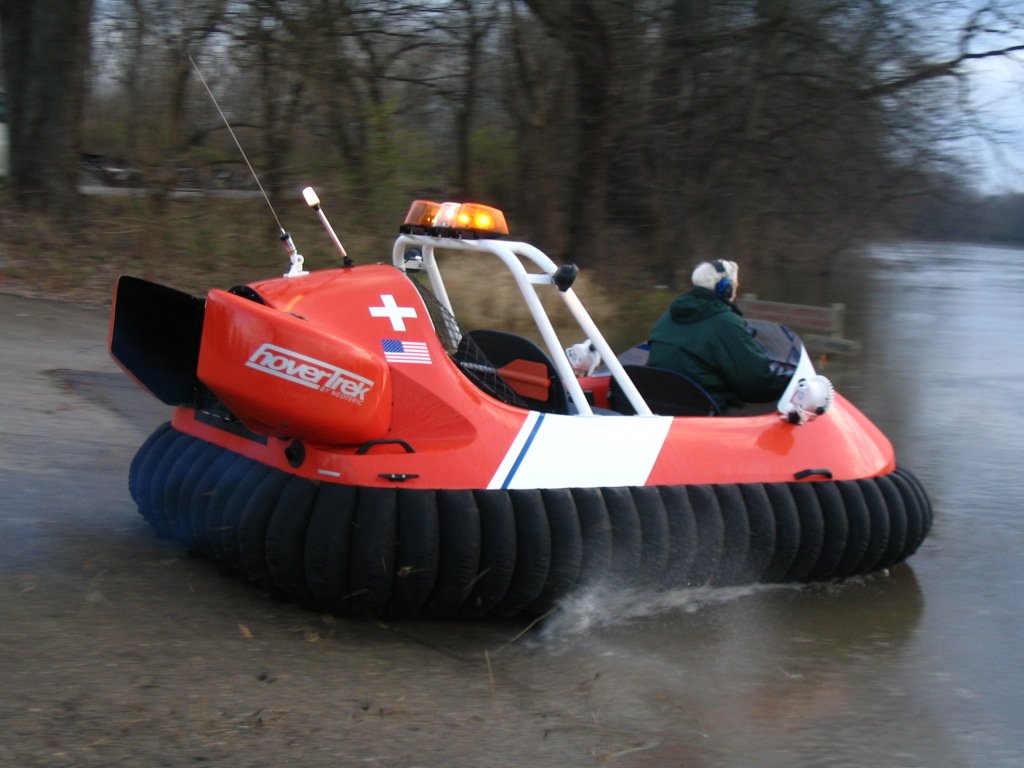

RIGOROUS DIGITIZING/CNC TOOLING
Using the state-of-the-art Faro 3D scanner, every major structural component of the Neoteric hovercraft has been digitized by 3D Engineering, many of them honed to function and fit better than ever. Neoteric hovercraft tooling plugs have been scanned, evaluated and skillfully upgraded using NX Solid Modeling software.
As components meet Neoteric’s standards, this data is provided to a select machine shop, where it comes to life on the 5-axis CNC machines of the tool builder. Thousands of passes are made by the CNC cutter head, each accurate to within a few thousandths of an inch.
UNIQUE TRAILER SYSTEMS
When other hovercraft manufacturers may offer no trailer at all, Neoteric has applied its exacting engineering standards to give you one-of-a-kind trailers as unique as the Neoteric hovercraft itself.
Both the hover-on/hover-off trailer and the winch-on/roll-off trailer allow unusually easy loading and unloading by just one person. And the winch-on/roll-off trailer is completely open to allow easy under hull inspections and convenient skirt maintenance.
